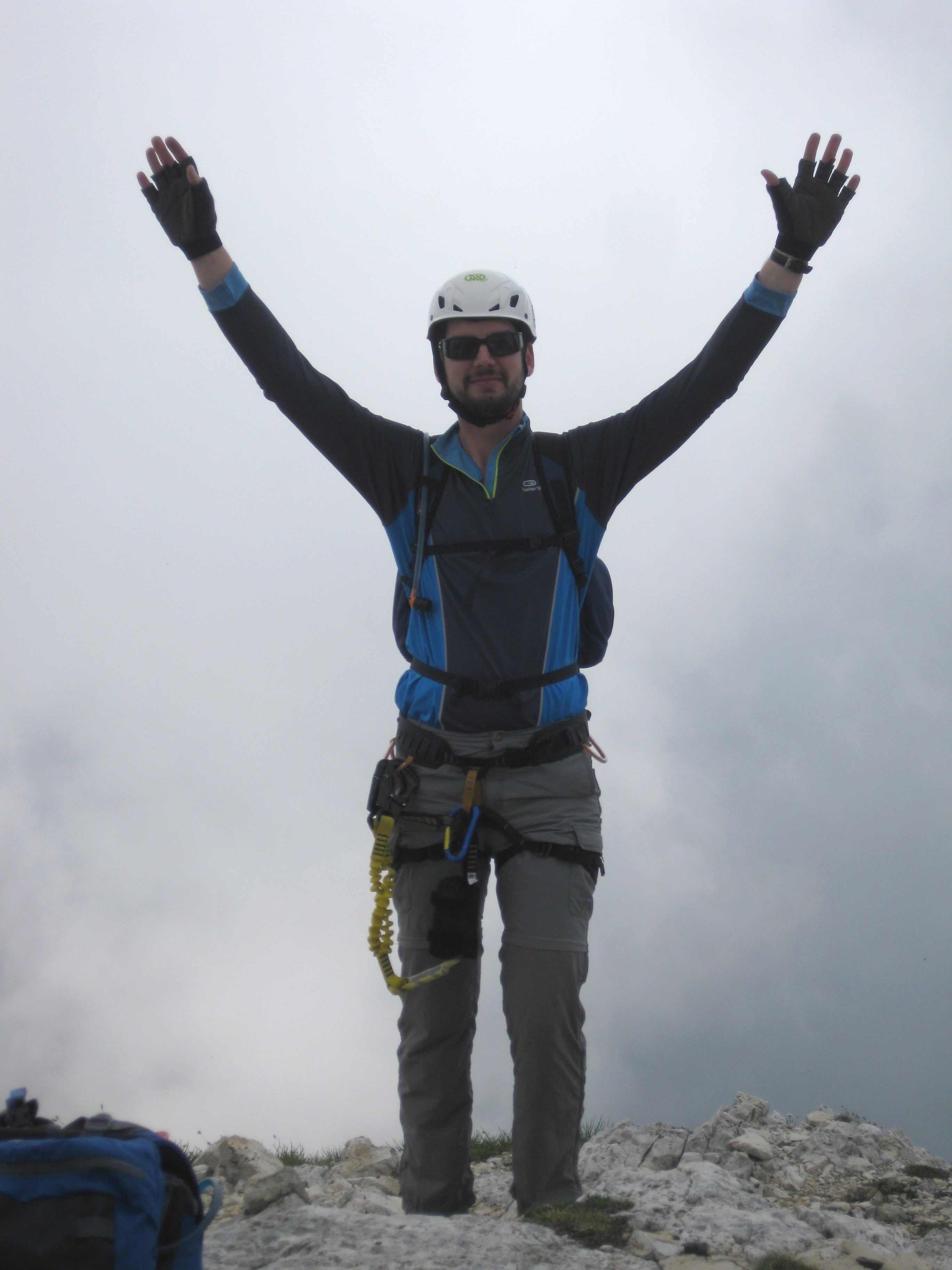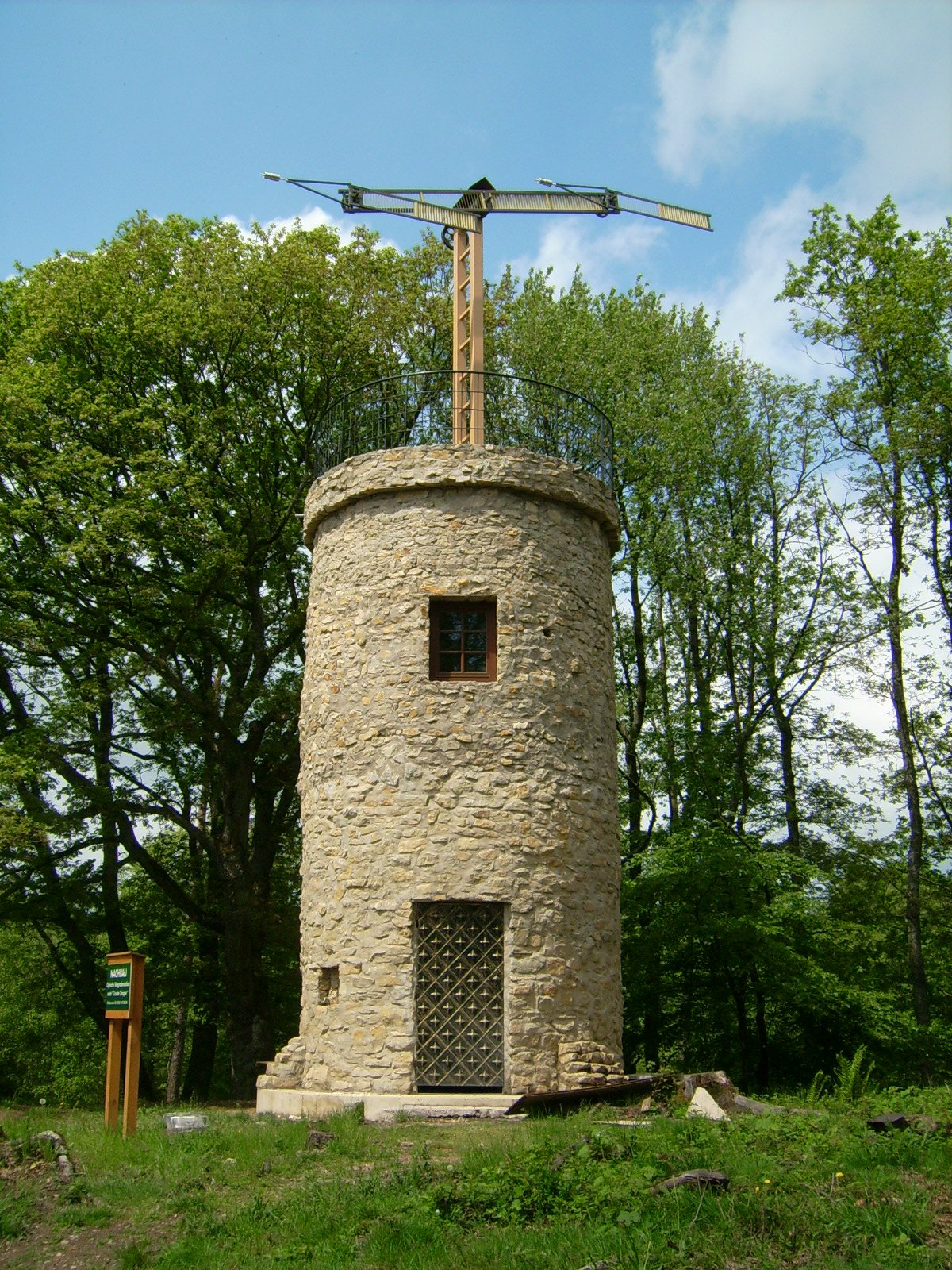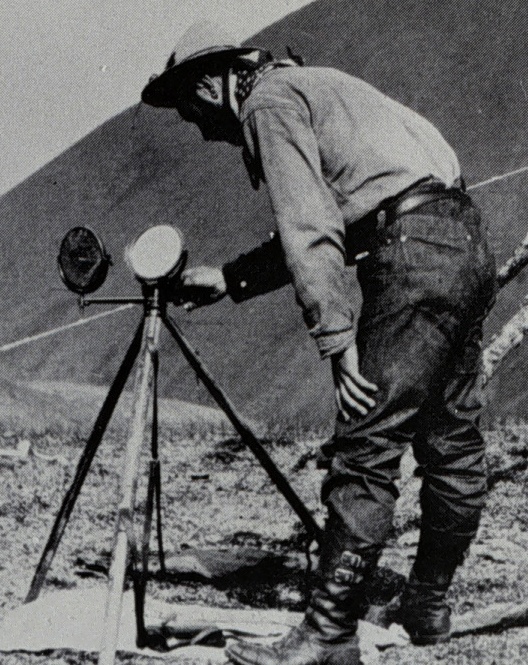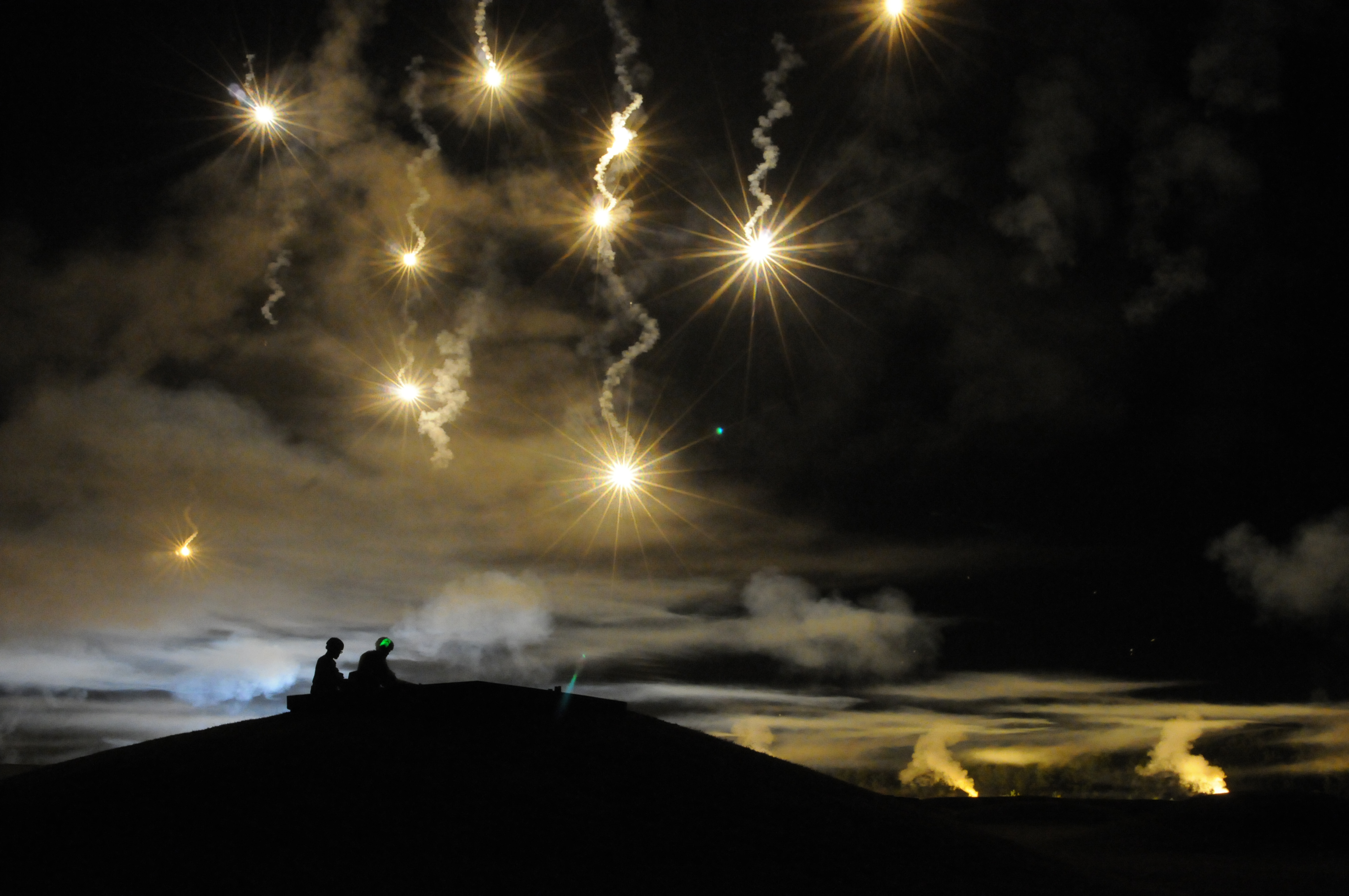|
Alpine Distress Signal
The Alpine distress signal is a distress signal in the case of mountain emergency, an emergency in alpine areas. There are also special emergency call numbers, for use with the telephone service by which the emergency services can be contacted. The Alpine distress signal The Alpine distress signal was introduced in 1894 on the suggestion of Clinton Thomas Dent and was soon adopted internationally. The Alpine distress signal traditionally consists of a signal by blasts from a whistle (may also be an air horn), which is repeated six times in the minute (every ten seconds). It is to be repeated after one minute of break in same manner. The reply to such a signal is given with three successive indications per minute and likewise repeated after one minute of break. Thus it can be confirmed to the person/party in trouble that its distress signal was received. Whoever receives distress signals, should confirm and alert the emergency services. The distress signal can also be a sound, ... [...More Info...] [...Related Items...] OR: [Wikipedia] [Google] [Baidu] |
Distress Signal
A distress signal, also known as a distress call, is an internationally recognized means for obtaining help. Distress signals are communicated by transmitting radio signals, displaying a visually observable item or illumination, or making a sound audible from a distance. A distress signal indicates that a person or group of people, ship, aircraft, or other vehicle is threatened by a serious or imminent danger and requires immediate assistance.Aeronautical Information Manual U.S. Federal Aviation Administration, 2016 Use of distress signals in other circumstances may be against local or . An [...More Info...] [...Related Items...] OR: [Wikipedia] [Google] [Baidu] |
Alpine Climate
Alpine climate is the typical weather ( climate) for elevations above the tree line, where trees fail to grow due to cold. This climate is also referred to as a mountain climate or highland climate. Definition There are multiple definitions of alpine climate. In the Köppen climate classification, the alpine and mountain climates are part of group ''E'', along with the polar climate, where no month has a mean temperature higher than . According to the Holdridge life zone system, there are two mountain climates which prevent tree growth : a) the alpine climate, which occurs when the mean biotemperature of a location is between . The alpine climate in Holdridge system is roughly equivalent to the warmest tundra climates (ET) in the Köppen system. b) the alvar climate, the coldest mountain climate since the biotemperature is between 0 °C and 1.5 °C (biotemperature can never be below 0 °C). It corresponds more or less to the coldest tundra climates and t ... [...More Info...] [...Related Items...] OR: [Wikipedia] [Google] [Baidu] |
Emergency Telephone Number
Most public switched telephone networks have a single emergency telephone number (sometimes known as the universal emergency telephone number or the emergency services number) that allows a caller to contact local emergency services for assistance. The emergency number differs from country to country; it is typically a three-digit number so that it can be easily remembered and dialed quickly. Some countries have a different emergency number for each of the different emergency services; these often differ only by the last digit. In many countries, dialing either 1-1-2 (used in Europe and parts of Asia) or 9-1-1 (used in the Americas) will connect callers to emergency services. For individual countries, see the list of emergency telephone numbers. Configuration and operation The emergency telephone number is a special case in the country's telephone number plan. In the past, calls to the emergency telephone number were often routed over special dedicated circuits. Though with t ... [...More Info...] [...Related Items...] OR: [Wikipedia] [Google] [Baidu] |
Clinton Thomas Dent
Clinton Thomas Dent Fellowship of the Royal College of Surgeons, FRCS (7 December 1850 – 26 August 1912) was an English surgeon, author and mountaineering, mountaineer. Early life The fourth surviving son of Thomas Dent, he was educated at Eton College and Trinity College, Cambridge. Alpinism Alongside Albert F. Mummery, Albert Mummery, Dent was one of the most prominent of the British climbers who attempted the few remaining unclimbed mountains in the Alps in the period known as the silver age of alpinism. As an alpinist, Dent was very different from Mummery: Dent's first ascents in the Alps include the Lenzspitze (4,294 m) in the Pennine Alps in August 1870, with Alexander Burgener and a porter, Franz Burgener (of whom Dent wrote 'his conversational powers were limited by an odd practice of carrying heavy parcels in his mouth'), and the Portjengrat (Pizzo d'Andollo, 3,654 m) above the valley of Saas-Fee in 1871. On 5 September 1872 the combined parties of Dent ... [...More Info...] [...Related Items...] OR: [Wikipedia] [Google] [Baidu] |
Yodeling
Yodeling (also jodeling) is a form of singing which involves repeated and rapid changes of pitch between the low-pitch chest register (or "chest voice") and the high-pitch head register or falsetto. The English word ''yodel'' is derived from the German (and originally Austro-Bavarian) word ''jodeln'', meaning "to utter the syllable ''jo''" (pronounced "yo" in English). This vocal technique is used in many cultures worldwide. Recent scientific research concerning yodeling and non-Western cultures has shown that music and speech evolved from a common prosodic precursor. Alpine yodeling was a longtime rural tradition in Europe, and became popular in the 1830s as entertainment in theaters and music halls. In Europe, yodeling is still a major feature of folk music (Volksmusik) from Switzerland, Austria and southern Germany and can be heard in many contemporary folk songs, which are also featured on regular TV broadcasts. In the United States, traveling minstrels were yodeling in ... [...More Info...] [...Related Items...] OR: [Wikipedia] [Google] [Baidu] |
Optical Communication
Optical communication, also known as optical telecommunication, is communication at a distance using light to carry information. It can be performed visually or by using electronic devices. The earliest basic forms of optical communication date back several millennia, while the earliest electrical device created to do so was the photophone, invented in 1880. An optical communication system uses a transmitter, which encodes a message into an optical signal, a channel, which carries the signal to its destination, and a receiver, which reproduces the message from the received optical signal. When electronic equipment is not employed the 'receiver' is a person visually observing and interpreting a signal, which may be either simple (such as the presence of a beacon fire) or complex (such as lights using color codes or flashed in a Morse code sequence). Modern communication relies on optical networking systems using optical fiber, optical amplifiers, lasers, switches, routers, and ... [...More Info...] [...Related Items...] OR: [Wikipedia] [Google] [Baidu] |
Heliograph
A heliograph () is a semaphore system that signals by flashes of sunlight (generally using Morse code) reflected by a mirror. The flashes are produced by momentarily pivoting the mirror, or by interrupting the beam with a shutter. The heliograph was a simple but effective instrument for instantaneous optical communication over long distances during the late 19th and early 20th century. Its main uses were military, survey and forest protection work. Heliographs were standard issue in the British and Australian armies until the 1960s, and were used by the Pakistani army as late as 1975. Description There were many heliograph types. Most heliographs were variants of the British Army Mance Mark V version (Fig.1). It used a mirror with a small unsilvered spot in the centre. The sender aligned the heliograph to the target by looking at the reflected target in the mirror and moving their head until the target was hidden by the unsilvered spot. Keeping their head still, they then adj ... [...More Info...] [...Related Items...] OR: [Wikipedia] [Google] [Baidu] |
Flare
A flare, also sometimes called a fusée, fusee, or bengala in some Latin-speaking countries, is a type of pyrotechnic that produces a bright light or intense heat without an explosion. Flares are used for distress signaling, illumination, or defensive countermeasures in civilian and military applications. Flares may be ground pyrotechnics, projectile pyrotechnics, or parachute-suspended to provide maximum illumination time over a large area. Projectile pyrotechnics may be dropped from aircraft, fired from rocket or artillery, or deployed by flare guns or handheld percussive tubes. History The earliest recorded use of gunpowder for signaling purposes was the 'signal bomb' used by the Chinese Song Dynasty (960–1279) as the Mongol-led Yuan Dynasty (1271–1368) besieged Yangzhou in 1276. These soft-shelled bombs, timed to explode in midair, were used to send messages to a detachment of troops far in the distance. Another mention of the signal bomb appears in a text dating ... [...More Info...] [...Related Items...] OR: [Wikipedia] [Google] [Baidu] |
Smoke Signal
The smoke signal is one of the oldest forms of long-distance communication. It is a form of visual communication used over a long distance. In general smoke signals are used to transmit news, signal danger, or to gather people to a common area. History and usage In ancient China, soldiers along the Great Wall sent smoke signals on its beacon towers to warn one another of enemy invasion. The colour of the smoke communicated the size of the invading party. By placing the beacon towers at regular intervals, and situating a soldier in each tower, messages could be transmitted over the entire 7,300 kilometres of the Wall. Smoke signals also warned the inner castles of the invasion, allowing them to coordinate a defense and garrison supporting troops. In ancient Sri Lanka, soldiers stationed on the mountain peaks would alert each other of impending enemy attack (from English people, Dutch people or Portuguese people) by signaling from peak to peak. In this way, they were able to ... [...More Info...] [...Related Items...] OR: [Wikipedia] [Google] [Baidu] |
Semaphore Flags
Flag semaphore (from the Ancient Greek () 'sign' and - (-) '-bearer') is a semaphore system conveying information at a distance by means of visual signals with hand-held flags, rods, disks, paddles, or occasionally bare or gloved hands. Information is encoded by the position of the flags; it is read when the flag is in a fixed position. Semaphores were adopted and widely used (with hand-held flags replacing the mechanical arms of shutter semaphores) in the maritime world in the 19th century. It is still used during underway replenishment at sea and is acceptable for emergency communication in daylight or using lighted wands instead of flags, at night. Contemporary semaphore flag system The current flag semaphore system uses two short poles with square flags, which a signal person holds in different positions to signal letters of the alphabet and numbers. The signaller holds one pole in each hand, and extends each arm in one of eight possible directions. Except for in the r ... [...More Info...] [...Related Items...] OR: [Wikipedia] [Google] [Baidu] |
Ground To Air Signaling - Yes
Ground may refer to: Geology * Land, the surface of the Earth not covered by water * Soil, a mixture of clay, sand and organic matter present on the surface of the Earth Electricity * Ground (electricity), the reference point in an electrical circuit from which voltages are measured * Earthing system, part of an electrical installation that connects with the Earth's conductive surface * Ground and neutral, closely related terms Law * Ground (often grounds), in law, a rational motive or basis for a belief, conviction, or action taken, such as a legal action or argument: * Grounds for divorce, regulations specifying the circumstances under which a person will be granted a divorce Music * ''Ground'' (album), the second album by the Nels Cline Trio * "Ground" (song), one of the songs in the debut album of the Filipino rock band Rivermaya * Ground bass, in music, a bass part that continually repeats, while the melody and harmony over it change * ''The Ground'', a 2005 albu ... [...More Info...] [...Related Items...] OR: [Wikipedia] [Google] [Baidu] |







